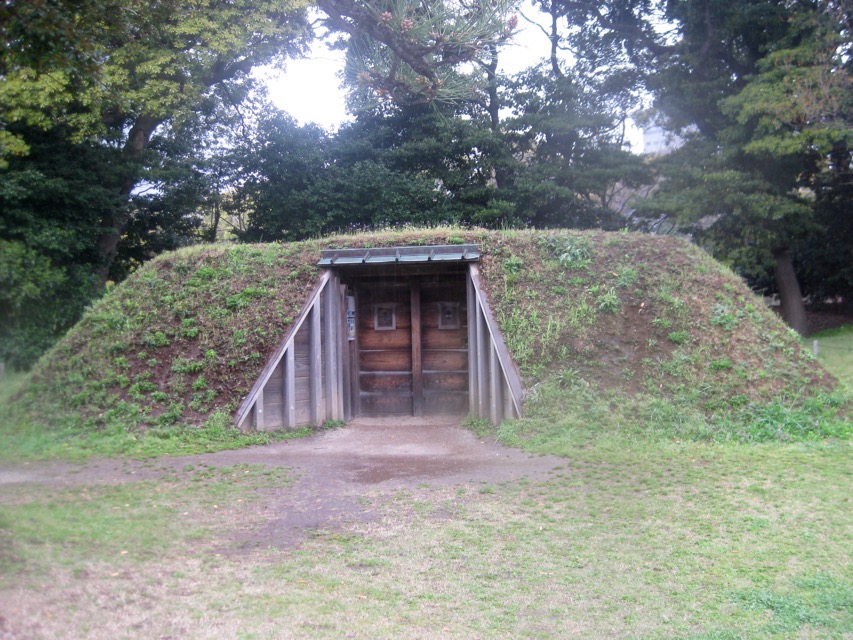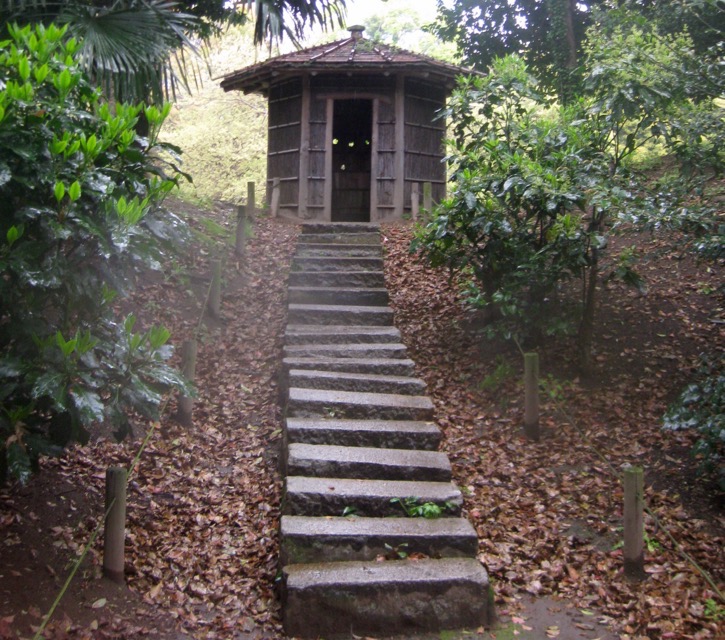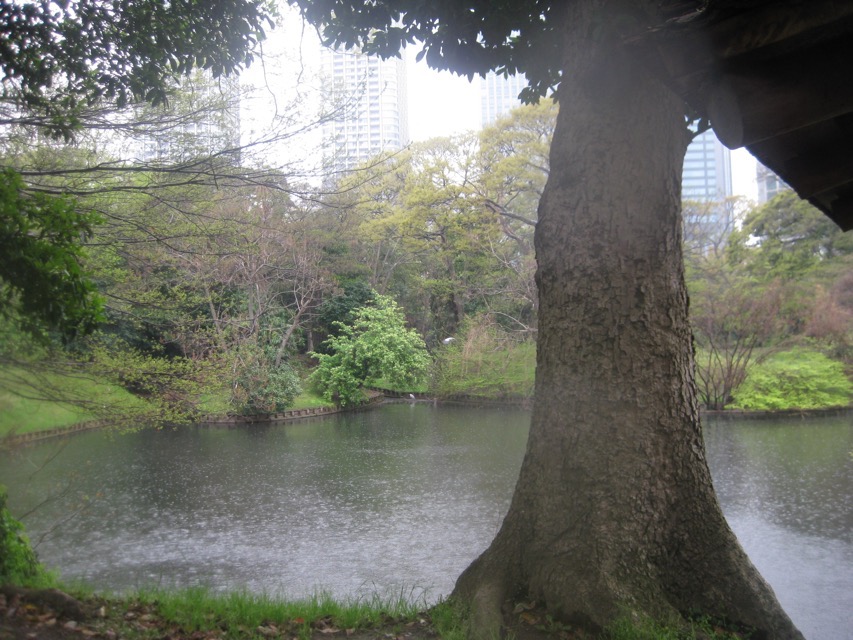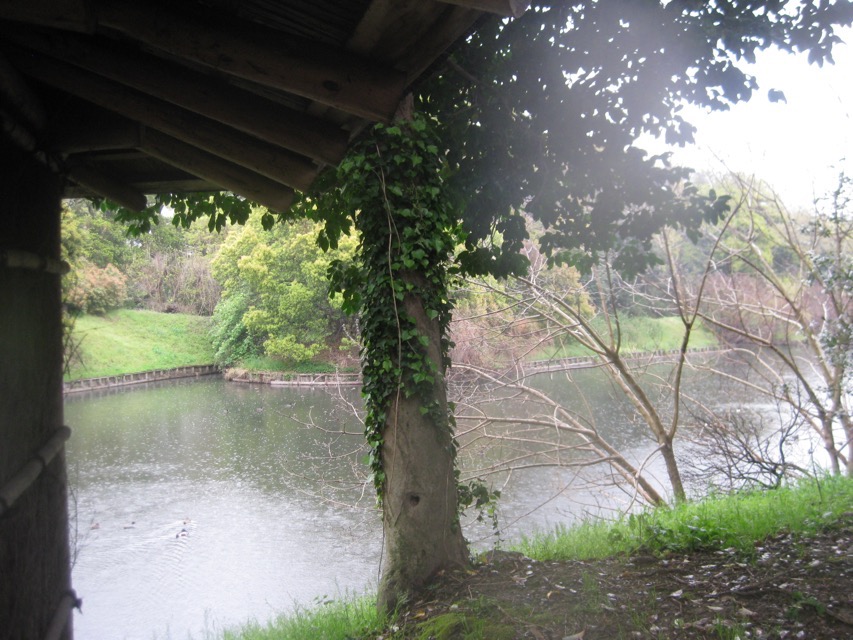I came upon this mound in the garden and the following explanation was given on the doors. It was Koshin-do Kamoba.

Presumably the konozoki - see below - where lookouts hide
Kamoba (meaning “duck hunting ground”) was once a facility for hunting waterfowl, especially wild ducks for fun, built in the villa grounds of the feudal lords in the past. It is said that the facility of kamoba can be seen only in five places nationwide at present and one of them is Hamarikyu Gardens.
Kamoba is comprised of motodamari, a big pond with islets in the middle for the waterfowl that come flying over to rest, and several hikibori, watercourses dug from the edge of the pond. To start with, some decoy domestic ducks, which have been trained to lure the game waterfowl into a watercourse, are released into the pond. The pond is surrounded by an embankment about three meters in height and it is planted heavily with bamboo grass, bamboos and evergreens so that a relaxing environment for the waterfowl to sense that no one is around can be created. Next, from obnozoki, a lookout from where people can look out over the pond, the condition of the waterfowl gathered and the direction of the wind are checked, and at the same time, which watercourse to use is determined. Then, at konozoki, a structure built at the end of a watercourse where lookouts hide, people scatter feed while hitting wooden plants. Finally, the waterfowl that have been lured into the chosen watercourse by the feed and the decoys are ambushed by the falcons and the people with nets hidden in the shade of the watercourse embankments.

Probably the obnozoki - overlook
There are two duck hunting sites, Koshin-do Kamoba and Shinsen-za Kamoba. The first was built in 1778 and the second in 1791. Koshindo was a shrine which was once situated in the northeast of the chamber, giving the Kamoba its name.

Above and below: Koshin-do pond
